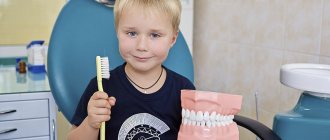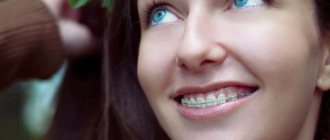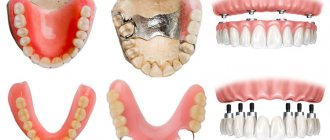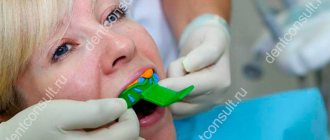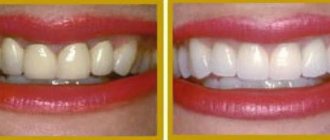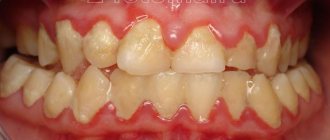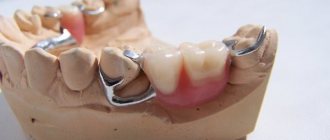The process of formation of baby teeth is long and tedious; at this stage, every baby needs a gum massager that soothes and eases the physical condition. Teether is also a game that stimulates tactile sensations and vision; the child learns to recognize shapes and colors, feel heat and cold, hardness and softness. The editors of the YaNashla website have prepared a rating of the best teethers for 2021.
What types of teethers are there?
When developing such a specific device as a device to facilitate teething, we proceeded from the following criteria:
- Chemical and food safety of the product. Its long stay in the mouth, prolonged contact with such an aggressive environment as saliva should not cause the breakdown of the components of the rodent, like food.
- Mechanical strength. Under no circumstances should a child bite off and swallow even the smallest piece of teething material with his growing teeth.
- To be bright, attractive - the child will reject the “badass” if it is of an unacceptable and even frightening shape and color for him.
- Be comfortable for the hand to grip so that the child can use the teether as a multifunctional toy, like a rattle.
- The product should be complex in relief - the child, moving it in his hands, will develop fine motor skills of his fingers.
- The size and shape must be such that it cannot be swallowed.
Therefore, a teether will be preferable to a pacifier: it can be bitten by already grown teeth, and harmful microflora will immediately begin to accumulate in places of damage.
Judging by the products arriving in specialized sections of pharmacies, there really are no problems with the aesthetic appeal of this item for children. Parents just need to correctly assess the degree of rigidity of the rodent so that the child does not experience discomfort from its too hard surfaces.
Selection by age
Teethers are divided into three groups that parents need to focus on according to the age of their child.
- For primary incisors. The first teeth - baby incisors - appear in children aged 5 to 10 months on the lower jaw and 7-12 on the upper (for the medial incisors). Then, from 7 to 16 months on the lower jaw and from 9 to 12 for the upper jaw, the lateral incisors grow. For their appearance, it is better to buy soft silicone teethers, which will provide both enhanced massage of the gums and dynamic load on the edges of the tooth emerging from the gums.
- At 12-18 months for the lower jaw and 13-19 months for the upper jaw, the first (deciduous) premolars begin to cut through the gums. This process will be facilitated by rodents made of harder silicone or plastic with a soft and elastic structure.
- The second premolars will begin to grow at the following times: lower at 20-21 months, upper at 25-33 months. For their normal growth, not only biting, but also chewing of something is required. You need hard or semi-rigid silicone or plastic.
For the first age category, they can be of the simplest, uncomplicated form. The principle is “so that there are”. This is usually a triangular or ring-shaped grasping toy that is convenient to take from any position and pick up something dropped during play from a crib or playpen. Weight is minimal.
Later, products of more complex shapes, with multi-colored, bright colors are purchased. Their rigidity, elasticity and wear resistance also change, because what easily withstood the impact of barely breaking through incisors will already fail in the face of canines and premolars.
Procedure for making and installing plates for teeth straightening
The selection and production of plates for correcting the bite is carried out only after examination by an orthodontist. The technique is as follows:
- A volumetric image of the jaw bone tissue (OPTG) is taken;
- Impressions of the jaws are taken;
- They are sent to a dental laboratory to produce the selected plate;
After the orthodontic equipment has been manufactured, the doctor installs it and explains to the parents and child how to wear it. The fixed structure takes a little longer to install than the removable one. The procedure for adjusting and installing the plate is simple and painless. At first, the child feels discomfort from the presence of the equipment in the mouth, but then he gets used to it.
Types of teethers
Compound form
If the teether has a complex shape, playing with it can help develop fine motor skills. This is especially true for composite products in the form of rattles or transformers with moving parts.
In the first option, the child’s attention will be attracted by the sound made by the teether. In the second, the main motivation to play with the product will be the unusual shape of it and the parts moving relative to each other. But in both the first and second cases, the main difference will be in the material of the “working part,” that is, the one that is being chewed, and the holder.
The one that the child holds on to most of the time usually has a more rigid structure; this was not done by chance. Sometimes the child gets tired of the flexibility of the working part and wants something extreme. Then he can always unfold the toy and lightly bite its hard part. Not the one made from more or less pliable silicone or latex, but plastic, rigid or semi-rigid. This ensures a change in stimuli and alternation between gentle and hard massages.
Pacifier
The rodent may also have a more traditional shape, familiar to many parents. An example is a pacifier. It can only be called a “dummy” conditionally: inside it, like its outer layer, is completely cast. Or large-porous, with walls whose thickness has been increased so that the child could not bite through it with slightly grown teeth. Although orthodontists do not recommend having a pacifier-shaped rodent. It is as harmful to the formation of the bite as the fingers of a baby.
Teether with cavity
There are also teethers with a sealed cavity, inside of which there is a special gel or even just water. They are placed in the refrigerator for some time. Only, of course, not for the purpose of freezing, in order to cool them to a temperature that causes a comfortable sensation against the background of constant itching or pain in the gums.
Since water or gel quickly heats up from the temperature of the oral cavity, it is better to have not one, but at least a couple of such rodents. The first one has warmed up, but the pain or itching has not yet subsided - the child is immediately given a second one. In most cases, if the lowered temperature of one was not enough to eliminate painful and simply unpleasant sensations, then after the second they definitely go away.
With vibration
An even more advanced model is the vibrator device. The vibration is triggered by simply squeezing the toy with the baby’s gums or teeth. Such toys have a bright, elegant color, which in itself attracts attention. If the child’s color perception is normal, then there is an additional and pleasant, even funny, irritant that distracts the child from the uncomfortable sensations associated with teeth growth. In addition to relieving pain from massage, such chewing vibrators improve blood circulation in the gum tissue.
Teether brush
A teething brush is another option for playing with a baby. Massaging the gums with a silicone brush placed on the parent’s finger invariably evokes a storm of positive emotions in the child: he wiggles his legs, squeals with pleasure, and laughs boisterously.
Made from valuable wood
Rodents made of valuable wood, which are purchased or made independently at the age when the second premolars are already erupting. The wood used for their manufacture is non-toxic hardwood such as maple, oak, juniper, ash, and beech. Their advantage is durability and the ability to give them a wide variety of shapes, from a simple “donut” to a complex topographic surface with smooth or sharp transitions.
Orthodontic equipment for teeth straightening and bite formation
There are several tools to straighten your teeth and form your bite:
- Trainers;
- Braces;
- Plates for teeth straightening.
Trainers
Most orthodontic devices designed to correct malocclusion eliminate the consequences of the pathological process, without excluding its cause. A dental trainer is a device that performs both tasks. Wearing trainers helps develop the jaw muscles, reduce pressure on the jaw bones, restore breathing through the nose and correct tongue position. Suitable for treating children from 5 years of age. They are especially effective when replacing baby teeth with permanent ones to correct their incorrect position. Wearing time is limited to night and a few hours during the day.
An impression is not required for production. Transparent silicone is used in different colors to make them more interesting for children to wear. Adapts well and does not affect diction. It is used for minor bite deviations, and can even replace braces if there are contraindications to wearing them.
First, trainers with soft silicone are used. Later, more stringent ones are used. Used for: deviations in tooth growth (location, direction, etc.), impaired swallowing function, pathologies of the oral cavity leading to chronic nasal congestion. They require daily care just like all devices.
Braces
Braces are special linings for each tooth, which are strung on a rigid metal arch. The main qualities of the arc:
- Strength;
- Elasticity;
- Availability of shape memory. No matter how the wire is bent during the treatment process, it tends to take its original shape.
Braces are the most common way to correct malocclusions. Starting from the age of 12 (the average period for the final eruption of permanent teeth), they can be installed in children. Braces are a non-removable device. They are attached to each tooth. Wearing them requires regular visits to your doctor, who determines and regulates the tension of the wire. When wearing braces, they are quite noticeable, and this affects the teenager’s behavior (they become more shy, tense and smile less often). The use of braces requires increased attention to oral hygiene (food gets stuck in the system) and imposes restrictions on the consumption of certain foods (hard and viscous). But despite the disadvantages, this is a very strong and durable design that allows you to eliminate many bite defects.
The use of braces requires increased attention to oral hygiene
Retainer
A retainer (in this case, a permanent retainer) is a thin wire made of the same material as the bracket arch. It is not an independent orthodontic device, but serves to prevent aligned teeth from returning to their original place. It is usually installed before removing braces, so we decided to mention it. It is not noticeable to others because it is attached to the inside of the jaw, where it is secured with dental cement that hardens under the influence of ultraviolet radiation. It is almost impossible to tear off, so there are no restrictions on eating hard and sticky foods.
Deadline for offering a teether to a baby
Teethers are always purchased in advance. One and a half to two months before the possible appearance of the first swelling on the gums. Why is it said so vaguely – “...one and a half to two months”? No one can predict the exact date of teeth appearance; this process even depends on the baby’s nutrition (breastfeeding or artificial milk formula in his diet), the general health index, the presence of vaccinations and much more.
By the time the first teeth appear, a toy of a simple shape should already be ready, easy to grip and with such a hard “biting” surface. You also need to keep in mind that the first months of a child’s development are the most productive in terms of the formation of intelligence and useful habits, therefore, by the time the next teeth appear, the rodent toy should be changed to a more complex, bright and multifunctional one.
Plates for teeth straightening
Orthodontic plates are often called “braces” or “plates on the teeth.” This device is used to treat children under 15 years of age. Made individually for each child. It is attached to the outer surface, the inner part and can partially cover the sky. Made from soft or medium hard plastic and metal. The child takes food without any discomfort. There is no need for any special care for the plates.
Purpose:
- abnormal development of the bones of the jaw arches (narrowness of the jaw bone or disruption of its shape);
- the need to adjust the position of one or more teeth;
- movement of individual teeth;
- the presence of gaps between teeth (three and diastemas);
- the need to correct the narrowing of the palate;
- activation or slowdown of the jaw growth process;
- consolidation of results after using other orthodontic systems;
- preventing crowding;
- prevention of relapses of malocclusion, etc.
There is no need for any special care of the plates
Choosing a teether
When purchasing a product you need to pay attention to the following things:
- Manufacturer country. Look at the country's industrial rating. If it has a developed industry and a chemical industry in particular, one can hope that everything is in order with the safety of products intended for infants.
- The certificate is in Russian. A manufacturing company that values its reputation, when sending goods to the foreign market, will try to certify the products in accordance with the norms and laws.
- Buy such rodents only in pharmacies, in departments of goods for mothers and their small children, or in specialized stores with official licenses from the Ministry of Health.
- However, the certificate can also be faked - especially if the product is in strong demand. Examine the product carefully: sharp corners, edges and ribs, burrs, packaging defects, sloppy or smeared printing should alert you and make you refuse to purchase. Remember that a child's skin and gums are much more vulnerable than yours, and rough parts can damage them.
Most often, the choice when purchasing the first, simplest teethers is made between silicone products and latex ones. Silicone is more elastic and has increased rigidity compared to latex. But latex, for all its softness, often turns out to be more durable. In addition, latex, even in the absence of an orthodontic mold, will not spoil the bite. There, the requirements for deviations from the recommended forms are much stricter.
What is better - braces or braces?
The plates are only effective for people under 15 years of age and may not help in some situations. And even at the age of 10-12 years, in some cases it is necessary to install braces. If the pathologies are minor and are in the initial stage, then it is enough to use plates.
Advantages:
- Possibility to remove if necessary;
- Easy to care for your oral cavity;
- Cheaper than braces.
Flaws:
- Often not effective enough;
- Long-term addiction.
Advantages of braces:
- Continuous action on teeth;
- Quick addiction;
- A larger number of defects can be eliminated simultaneously.
Flaws:
- Difficulties in caring for the oral cavity;
- High cost for the entire range of services.
How to use teethers
You won’t get confused about the properties of many models of products for teething in children, because they are all equipped with detailed instructions for their care and use. But there are rules common to all models that are worth knowing in advance:
- Rodents are not sterilized in ovens, microwaves, boiling water, or even heated strongly (more than 60⁰C). Do not wash in the dishwasher;
- If cracks, chips, sharp edges appear in the product, or filler begins to leak from it, it must be thrown away immediately;
- Models with gel or water inside, which are cooled in the refrigerator. Placing such rodents in the freezer for faster cooling will cause irreversible changes in the silicone structure of the shell, so this is strictly not recommended!
- A newly purchased rodent needs to be sterilized. They just do this by washing with baby soap and then rinsing thoroughly. Or alcohol - if this is allowed by the instructions. Teether vibrators with batteries inside are not allowed to be heated with steam or dipped in boiling water.
- A child may have his own preferences that are incomprehensible to us. Therefore, if you actively reject a toy of a certain type or shape, do not try to impose such a model on him. It’s better to change it immediately and offer another one. In this regard, do not try to immediately buy the best and most expensive - what if the little one doesn’t like it?
Indications and contraindications for installing braces
The appointment and selection of the correct design is recommended by the doctor.
Treatment is prescribed in the following cases:
- Incorrect position of one or more teeth;
- Jaw bone development problem;
- Narrowing of the palate;
- Malocclusion;
- Teeth displacement after braces;
- Rare arrangement of teeth.
Orthodontists recommend installing plates for children under 12 years of age.
Often plates are placed on braces after treatment to secure the result as a retainer. You shouldn't be afraid of this.
In this age:
- the body grows and corrections occur quickly;
- children at this age are not so painfully worried about the installation of plates;
- children are more obedient and will not remove the plates often.
Plates are not installed in the following cases:
- untreated caries;
- gum disease;
- allergy to plate material;
- respiratory tract diseases;
- presence of stomatitis that requires treatment;
- abnormalities have been identified that require other treatment methods.
Model rating
By compiling this rating, we are in no way trying to put pressure on you with authority or somehow advertise specific models. Dry sales statistics, nothing more.
Avent
For the English Avent line, the price of models starts from three hundred rubles and ends at seven hundred. It includes products designed for all stages of dentition development in the upper and lower jaws. The most expensive of the series have a hermetically sealed helium filler inside to accumulate cold, if necessary.
Kanpol Baby
The Polish teethers called Kanpol Baby stand apart. They can be given to a child as early as a month. Almost all have a sealed cavity filled with water, which allows the products to be pre-cooled before giving to the child.
Price – from 100 to 800 rubles. The former have a simple donut shape, while the latter are animated toothbrushes with silicone or latex bristles. From a very young age, children are taught to use dental hygiene products. May have the shape of a banana, pea pod, etc.
Baby Ono
Baby Ono is another device from Poland. This is a brush that is placed on the parent's finger. Sold in a sealed transparent case. Helps both in massaging the gums and in removing food debris. You can use it from birth, and it costs between 150-180 rubles.
Nuby
American multifunctional bracelet, composite in composition (rubber-plastic). Brightly colored with safe dyes in the mass of the material, it has a set of movable beads, which is convenient for practicing fine motor skills of the baby’s hands. The versatility of the bracelet is also expressed in the fact that it is suitable for use from 3-4 months of a child’s life until the complete eruption of the entire set of teeth.
Pigeon
It has a simple “ring with ears” shape and a laconic design, including color. In the ring-shaped handle, balls roll in the internal tunnels, making ringing sounds. The “ears” are flat, with a relief surface made of silicone. It has no unnecessary details that distract attention, and costs about 350 rubles.
Sophie Woolley - Giraffe
The toy is made in France, made from safe and environmentally friendly rubber, natural and high quality. It has a velvety surface that is pleasant to the touch, imitating mother’s skin. You can give such a toy from the first months of a baby’s life. From three months, he will actively drag it into his mouth and scratch his gums with it, preparing them for the eruption and growth of teeth.
Tiny Love "Flower"
A complex toy in the shape of a dumbbell. Light balls roll and sound in the “handle”. At one end there is a spherical extension with a rattle ball placed in it. At the other end there is a “flower” with ten radial petals made of silicone, which can be sucked and chewed with pleasure, while the other petals rustle funny. The product is intended for babies of all ages, but it is still preferable to give it starting from 7-8 months - the toy is massive. It can cost up to 450 rubles.
Teether Chicco “Cherry”
Italian brand for children in the first months of life. A sealed bunch of silicone cherries contains a gel that is cooled in the refrigerator. Made from wear-resistant, environmentally friendly silicone. Allows freezing, which can be used for both storage and sterilization. Price 320 rubles.
Elephant Philips Avent
Teether in the shape of an elephant, has a hole for a child's hand to grasp, suitable for children from 3 months to a year and older. It is made of heat-resistant and healthy material, which means it can be subjected to heat treatment. Weighs a little, costs up to 550 rubles.
Reviews of plates for teeth straightening
Looking through the reviews from parents, it can be noted that they are all positive. Children quickly get used to wearing the equipment. All dental defects are corrected quickly. It cannot be said that for all children the operation with the installation of plates is completely painless, but if everything is chosen correctly, the inconvenience quickly passes.
Dentists also respond well to the plates. Some believe that in adults, correcting defects with plates is even more convenient. For them, this is done even longer, once, but in children, as the jaw grows, the correction plates need to be changed.
Summing up
Children's teeth are not only a cheerful smile. It is also an important link in the digestive tract. Depending on the quality of chewing food, the further process of digestion also depends. Disease of the teeth and gums often leads to inflammation of other organs. It is necessary to monitor the condition of a child’s teeth from a very early age. Replacing baby teeth with permanent ones should be natural. Often, an extracted baby tooth causes the molar to erupt in the wrong place, and as a result, the need for orthodontic treatment with plates or braces. Doctors say: “It is better to prevent a disease than to treat it.”
The appearance of malocclusion or crooked teeth must be corrected as early as possible. To identify abnormalities in a timely manner, it is recommended to bring your child for examination to the dentist at least twice a year, starting from the age of one.
Parents should ensure that their child learns to brush his teeth well as early as possible and help him do it correctly.
Periodically examine his oral cavity and if you notice a brown or white spot on his teeth, immediately contact a dentist. Currently, doctors have completely painless ways to treat caries.
